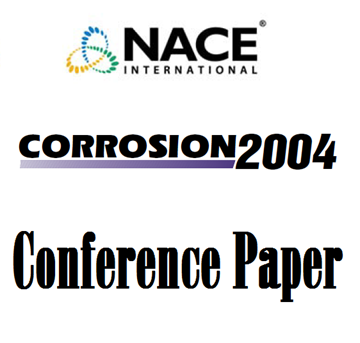Search
51316-7486-Effect of TSA Coating Damage on the Mechanism of Calcareous Deposit Formation in Boiling Seawater
Also Purchased
04022 Experiences on Thermal Spray Aluminum (TSA) Coating for Offshore Structures
Product Number:
51300-04022-SG
ISBN:
04022 2004 CP
Publication Date:
2004
$20.00
Microstructural Evaluation of Calcareous Deposits on TSA-coated Steel Structures at Elevated Temperatures
Product Number:
51315-5949-SG
ISBN:
5949 2015 CP
Publication Date:
2015
$20.00
51314-4196-Corrosion of Cathodically Polarized TSA in Subsea Mud at High Temperature
Product Number:
51314-4196-SG
ISBN:
4196 2014 CP
Publication Date:
2014
$0.00




